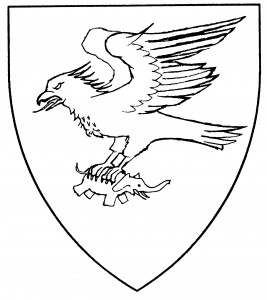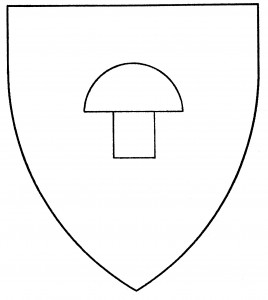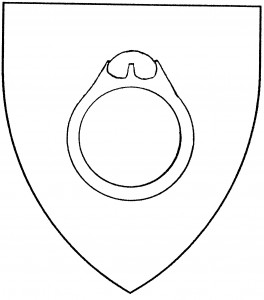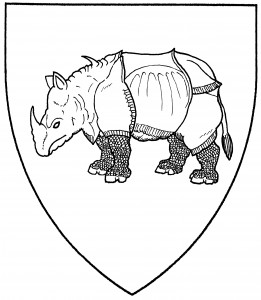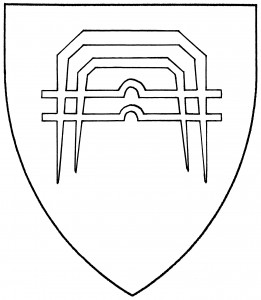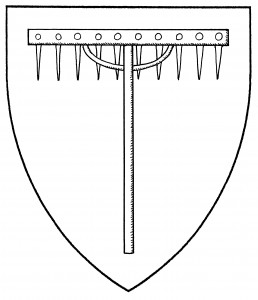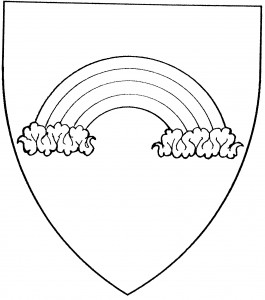The roc, or rukh, is an immense bird from Persian legend. Tales gave its home to be Madagascar; Marco Polo, in his Travels (III:33) describes the giant roc feather presented to the Great Khan, which modern writers guess was an exotic palm frond [EB XXIII:424]. The roc’s heraldic use appears to be unique to the Society, where it’s drawn essentially as an eagle; it is frequently depicted with an elephant in its talons, to show how large it is. The term is used mostly for canting purposes. The illustration shows a roc volant, wings addorsed. See also simurgh.
Justin du Roc bears: Per bend sinister azure and counter-ermine, in dexter chief an Arabian roc volant to sinister, wings addorsed argent, maintaining in its talons an elephant proper.
Roque Cartelle de Leon bears: Per chevron gules and sable, two lion’s heads cabossed and a roc rising, wings displayed and inverted, bearing in its sinister talon an elephant, all argent.
